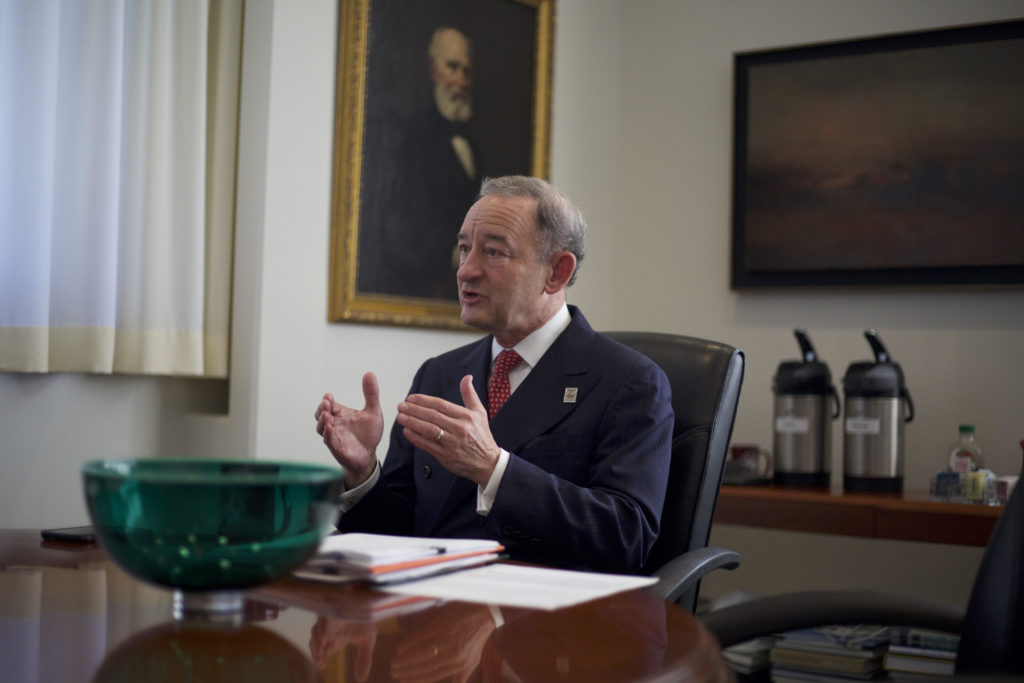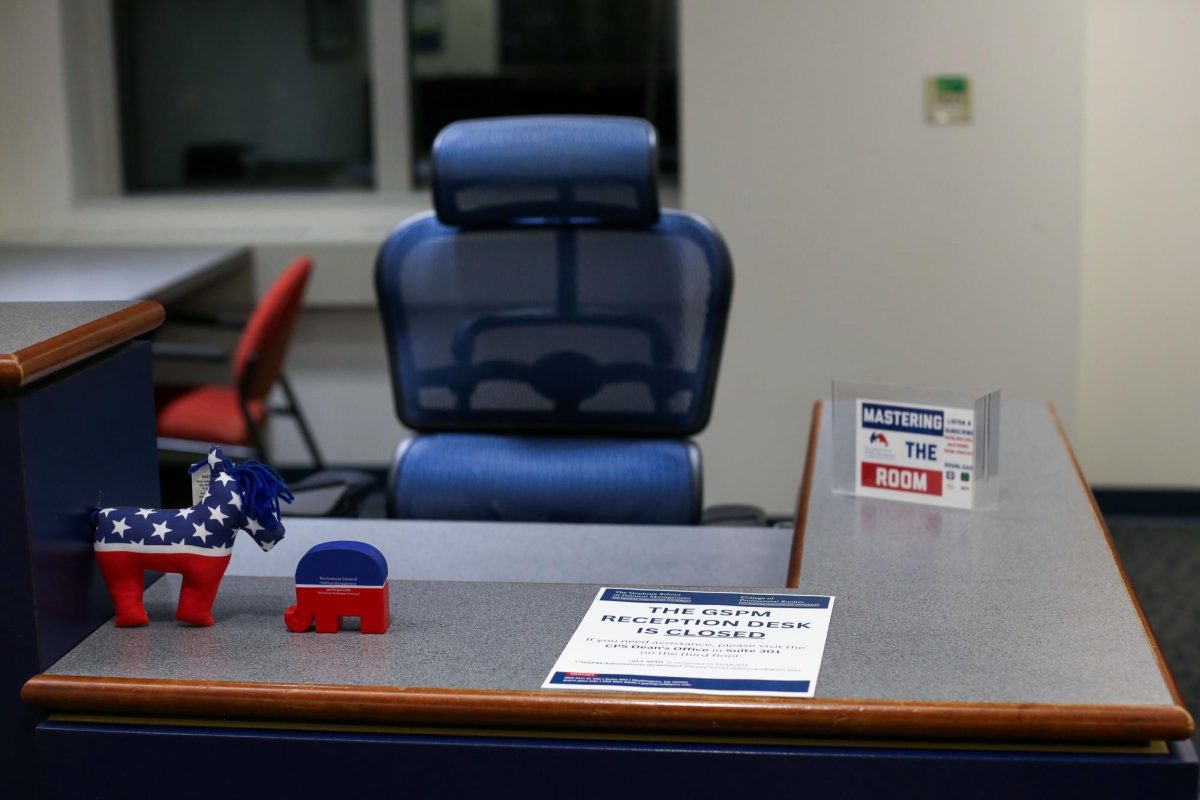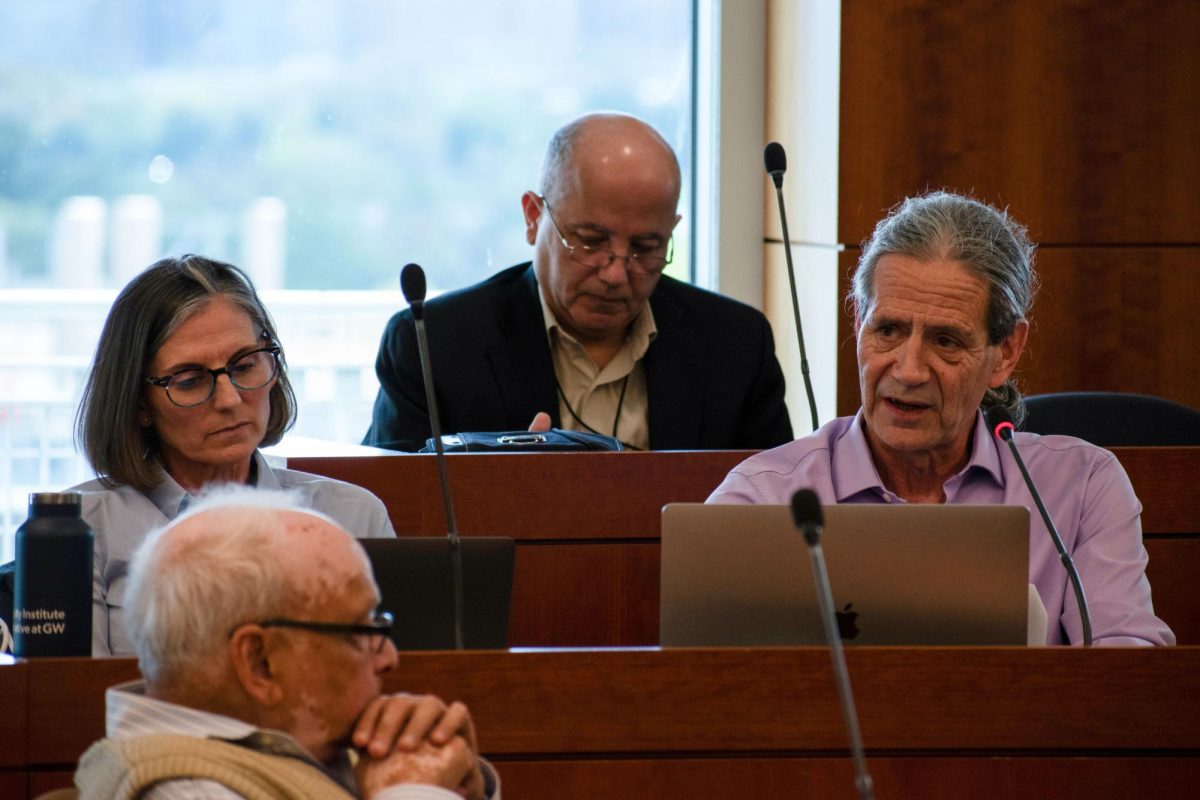Faculty said they aren’t concerned if GW’s next president chooses to establish a formal strategic plan, but instead hope he first focuses on including their opinions in major decision-making.
The University has lacked a strategic plan since officials labeled the plan set by outgoing University President Thomas LeBlanc, which the GW community said lacked shared governance, as “obsolete” last November given the COVID-19 pandemic. Faculty said they don’t think a strategic plan is currently necessary and instead hope administrators focus on pressing issues like an understaffed IT department and layoffs.
Now, as the University enters a “transition phase” leading into an up to 18-month interim presidency, faculty say officials should set their sights on resolving the GW community’s concerns about shared governance before developing a strategic plan.
“During this time, the important work of fulfilling our teaching and research mission is continuing,” University spokesperson Crystal Nosal said in an email. “After Dr. Wrighton officially joins the University Jan. 1, he will be communicating his thoughts and plans with the GW community.”
Board of Trustees Chair Grace Speights said to faculty in April that officials would conduct a broader assessment of shared governance policies at the University, because they rely on “constructive engagement” between faculty and officials.
“The Board spent a lot of time over the summer thinking about the issue of shared governance and how we could move forward together – the three constituents – to make this an even better University, and the Board I can tell you is committed to doing that,” Speights said at a Faculty Senate meeting in September.
Speights said in September that officials are willing to pave a “fresh start” in talks between the Board of Trustees, faculty and administration to improve shared governance.
GW community members cited initiatives like LeBlanc’s 20/30 plan – a plan to cut undergraduate enrollment by 20 percent while increasing the share of STEM majors to 30 percent – amid their calls for Leblanc’s resignation last year. Faculty said the 20/30 plan violated principles of shared governance and could lead to “major” cuts in funding to humanities departments.
As the University prepares for interim presidential leadership that could last into June 2023, officials have remained silent on when they expect to develop a strategic plan but also said they can’t move forward with major University planning efforts like a fundraising campaign without a strategic plan.
Amid officials’ silence on the status of the University’s strategic planning efforts, they’ve also said that they can’t move forward with certain campus-wide planning efforts without a strategic plan, like a major fundraising campaign.
Faculty said they’re unsure if a long-term strategic plan is necessary, and they would prefer if officials would prioritize directing more funding to research, classroom technology and staff positions after officials laid off 339 staff members last year as part of their efforts to mitigate the financial impact of the pandemic. They said if officials did implement a strategic plan, they should take input from the GW community and shared governance into consideration through town hall meetings or surveys.
Harald Griesshammer, an associate professor of physics and a faculty senator, said he didn’t think a new strategic plan was necessary because the University should instead focus on the student and faculty members’ immediate demands, like addressing IT and staff layoffs.
“We’ll have a credible community effort only if at some point, [we] reign in the variety of voices that you get and then craft something where there was democratic process that those people who are doing the drafting are actually speaking for the community,” he said.
Griesshammer said the University’s implementation of its next strategic plan should be a “community effort” that includes all voices on campus, including students and faculty. He said officials must determine the University’s mission through town halls and surveys.
“What we need is we need to have an understanding of what GW wants to stand for and therefore, what it wants its future to be,” he said.
Officials announced in September that Mark Wrighton, the former chancellor at the University of Washington St. Louis, would take over as the interim president on Jan. 1. Faculty said Wrighton can help repair relations between the GW community and the administration and strengthen shared governance during his tenure as interim president.
Wrighton said in a September interview that he wants to work with faculty to create a “common understanding” of shared governance during his presidency.
“Our objective is to prepare the institution for a new president by coming to both an understanding and implementing that understanding,” Wrighton said.
Griesshammer said at the start of Wrighton’s tenure next semester, the University should focus on the immediate problems affecting the community, like an understaffed IT department.
Faculty said in April that officials should direct more money in the Fiscal Year 2021 budget for research after the pandemic delayed ongoing research work.
Kim Roddis, a professor of civil engineering and faculty senator, said she feels she can trust Wrighton’s experience and judgment to get the University “back on track,” and determine whether or not GW needs a new strategic plan before the arrival of its next permanent president.
“If he chooses to use the strategic planning process, I’m fine with that as long as he does it within shared governance,” she said. “And if he chooses to do other things, I’m fine with that.”
Shaista Khilji, a professor of human and organizational learning and international affairs, said with improved shared governance, the University can implement a strategic plan that GW community members will commit to.
“If there is one thing that we can learn from our recent experiences, it is the need to strengthen shared governance at GW – a joint effort that trustees, administration and the faculty have recently embarked upon,” she said in an email.
Experts in higher education said strategic plans can help drive a university’s mission and without one, universities are limited in how they can distribute resources.
Joseph Paris, an assistant professor of higher education at Temple University, said a strategic plan can help officials align the University’s curriculum to its mission, which can help them determine how to distribute resources, like funding and administrative assistance, to its students and staff.
“In the absence of a strategic plan, there is a potential for perhaps misalignment of those resources and the outcome that those resources intend to achieve,” Paris said.
Tolani Britton, an assistant professor of higher education at the University of California Berkeley, said a strategic plan can help “rectify” policies and programs that support the students and faculty at a University.
“It could be difficult to make decisions that are in the long term interest and vision of the institution if that vision has not been articulated through a strategic plan with concrete milestones and goals,” she said.
Jennifer Lee Hoffman, an associate professor of higher education and leadership policy at the University of Washington, said the pandemic may have amplified any enrollment and financial challenges that a University may have been facing before the pandemic. She said the pandemic has led to “uncertainty” over the future of higher education institutions, and a strategic plan can help address those concerns.
“The concern is that colleges, universities that are really enrollment dependent are going to have to be really careful about the decisions that they make so that they maintain their fiscal viability,” she said. “So that’s where your strategic plan is really, really important.”








